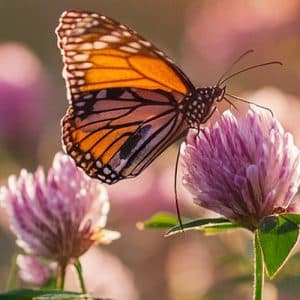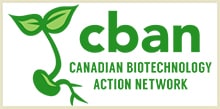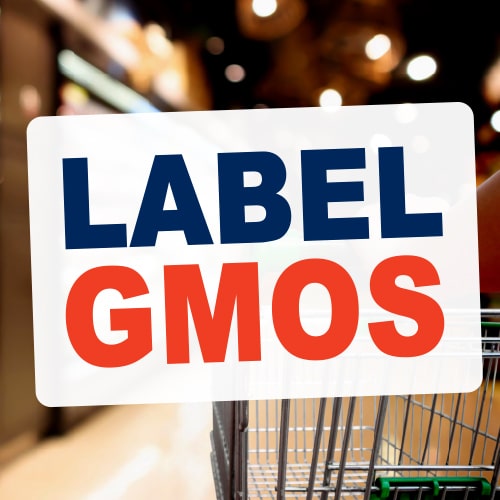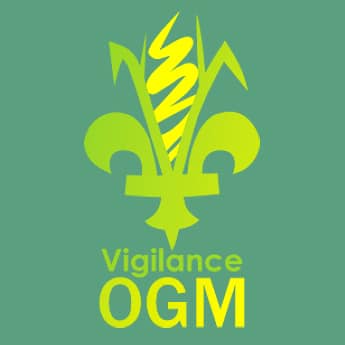Monarch Butterfly and GMOs
“Milkweed decline is strongly correlated with the use of herbicide-resistant crops.”
– Committee on the Status of Endangered Wildlife in Canada (COSEWIC), Assessment and Status Report on the Monarch (Danaus plexippus) in Canada, 2016

The Committee on the Status of Endangered Wildlife in Canada (COSEWIC) assessment and status report on the Monarch butterfly (2016) concluded that the critical decline in Monarch habitat in North America is “strongly correlated” with the use of genetically engineered herbicide-tolerant crops. In 2023, the Government of Canada declared the Monarch an endangered species.
The federal government profile of the monarch says: “There are many threats to the Monarch and the plants upon which they depend in Canada, although the severity of some of the threats is uncertain. These threats include:
- Loss of breeding habitat and sources of nectar (for example, milkweed and wildflowers) across the species’ range due to agricultural intensification.
- Insecticide use and the increased use of herbicides reducing milkweed availability
- Climate change and extreme weather events“
In the profile, Environment and Climate Change Canada recommends actions including, “refraining from or reducing the use of pesticides is another way to help support the Monarch. Herbicides can harm milkweed and flowering plants that Monarchs depend on for survival.”
 Reduced weed diversity in herbicide-tolerant cropping systems has had a very direct impact on the Monarch butterfly. Monarchs are famous for their long migration from Eastern Canada and the US to Central Mexico. On their flight back north, the butterflies stop to breed in the southern and Mid-western US, before future generations continue northward, some travelling as far as Canada. Monarchs have specific needs during this time: The butterfly lays its eggs exclusively on some species of milkweed, and monarch caterpillars eat only milkweed leaves. Monarchs have co-existed within agricultural ecosystems throughout the past century, until the introduction of GM glyphosate-tolerant crops.
Reduced weed diversity in herbicide-tolerant cropping systems has had a very direct impact on the Monarch butterfly. Monarchs are famous for their long migration from Eastern Canada and the US to Central Mexico. On their flight back north, the butterflies stop to breed in the southern and Mid-western US, before future generations continue northward, some travelling as far as Canada. Monarchs have specific needs during this time: The butterfly lays its eggs exclusively on some species of milkweed, and monarch caterpillars eat only milkweed leaves. Monarchs have co-existed within agricultural ecosystems throughout the past century, until the introduction of GM glyphosate-tolerant crops.
Milkweed species are an important food source for Monarch butterflies, the sole plant on which the butterflies lay their eggs, and the sole source of food for newly hatched caterpillars. Milkweeds grow in various habitats, including in fields and on roadsides, but their populations have been dramatically reduced with the increased and widespread use of the herbicide glyphosate on and around fields of genetically engineered herbicide-tolerant crops in Canada and the US. This diminishing habitat essentially deprives the butterfly of its ability to breed.
Glyphosate is one of the few herbicides that kills common milkweed. Over the past two decades, as glyphosate use on corn and soy fields in the US has increased 20-fold, corn and soy fields in the critically important Monarch breeding ground of the US corn belt have lost 99% of their milkweed.(Centre for Food Safety, 2015) The widespread adoption of GM crops has also driven up the use of glyphosate in Canada, where Monarchs breed during the summer.
The impact of glyphosate is particularly severe when used with GM glyphosate-tolerant crops. Because the GM crops are genetically modified to survive spraying of glyphosate, the herbicides can be used more frequently and at higher rates than with non-GM crops, and applied later in the season when milkweed is flowering. When glyphosate-tolerant crops are grown back-to-back, as they often are with glyphosate-tolerant corn and soy,
milkweed populations are unable to recover.
- The 2015 report Monarchs in Peril from the US Center for Food Safety details the impacts of glyphosate-tolerant crops on Monarch habitat and populations. The report concludes that, “Monarchs are in imminent danger unless milkweed is restored to Midwestern crop fields. Milkweed cannot recover with continued heavy use of glyphosate on genetically engineered glyphosate-tolerant crops.
- A wide range of other pesticides has also been found on milkweed plants, and scientists do not fully understand the ways in which these chemicals affect Monarch butterfly and other pollinator populations. See Halsch Christopher A. et al, Pesticide Contamination of Milkweeds Across the Agricultural, Urban, and Open Spaces of Low-Elevation Northern California, Frontiers in Ecology and Evolution, Volume 8 – 2020 DOI=10.3389/fevo.2020.00162.
- In addition, adult Monarch butterflies feed on nectar, and the increasing use of herbicides reduces the populations of other nectar plants near fields as well. The impacts of pesticide use on Monarchs also include, as discussed in the COSEWIC assessment, the toxicity of neonicotinoid insecticides.
Excerpt from the Committee on the Status of Endangered Wildlife in Canada (COSEWIC), Assessment and Status Report on the Monarch (Danaus plexippus) in Canada, 2016. 9.3 Agricultural and forestry effluents (high impact) (pages 38-39):
Milkweed decline is strongly correlated with the use of herbicide-resistant crops. Although glyphosate has been in use since the 1970s, herbicide-resistant crops have enabled farmers to apply glyphosate more frequently, at higher rates, and later in the growing season than with conventional crops (Center for Food Safety 2015). Common Milkweed is tolerant of the use of glyphosate as a pre-emergent treatment on corn and soybean fields. Milkweeds grow from perennial roots and are not significantly affected by pre-emergent herbicides but are killed or defoliated by glyphosate applied later in the season (Hartzler 2010).
Herbicide-resistant crop use in Canada has increased substantially over the past twenty years. Herbicide-resistant canola was first used in Canada in 1995, followed by soybeans in 1997, corn in 1998, and wheat in 2004 (Beckie et al. 2006). By 2005, about 95% of canola crop area and 60% of soybean crop area in Canada were glyphosate- resistant (Beckie et al. 2006). Adoption of herbicide-resistant corn was slower than soybeans and totalled only 17% to 18% of the total crop area by 2005. More recent Canadian data are unavailable but herbicide-resistant crop use probably followed trends similar to those in the United States.
Almost all corn and soybeans (91%) in the United States are sprayed with glyphosate. The area of these crops treated with glyphosate increased nine-fold between 1995 and 2013 (Center for Food Safety 2015). In these 18 years, the application rate of glyphosate increased by 58% on soybeans and 43% on corn; and application frequency increased by 64% on soybeans and 16% on corn. In total, glyphosate use on corn and soybeans increased more than 20-fold, from 4.5 million to 93 million kg/year (Center for Food Safety 2015).
Increased herbicide use may also reduce populations of flowers that provide nectar throughout Monarch migration routes. Monarchs increase their feeding rates while migrating south, particularly as they reach Texas and northern Mexico. Nectar is converted to lipids and used as an energy source by overwintering Monarchs (Brower et al. 2006). Declining nectar supplies have been proposed as a possible contributing factor in overwinter declines (e.g. Brower et al. 2006, Inamine et al. 2016).
Neonicotinoid insecticides were introduced in the 1990s and include imidacloprid, clothianidin, thiamethoxam, acetamiprid, thiacloprid, and dinotefuran. Neonicotinoids are approved for use as seed treatments, soil applications, and foliar sprays on oilseeds, grains, pulse crops, fruits, vegetables, greenhouse crops, ornamental plants, and Christmas trees in Canada (Health Canada 2016). In Ontario, nearly 100% of corn seed and roughly 60% of soybean seed are treated with neonicotinoids (Ontario Ministry of Agriculture, Food and Rural Affairs 2014). The use of neonicotinoid insecticides has increased substantially in recent years and has been implicated in declines of non-target species (Douglas et al. 2014; Jepsen et al. 2015).
Neonicotinoids persist in soil and are translocated to plant tissues to levels potentially lethal to non-target insects (Goulson 2013). Monarch caterpillars were fed milkweed leaves with levels of clothianidin similar to milkweeds exposed to spray from a treated field. Exposed caterpillars grew more slowly than unexposed caterpillars (Pecenka and Lundgren 2015). A neonicotinoid insecticide (imidacloprid) applied to soil was translocated to milkweed tissues, causing reduced survival of Monarch caterpillars feeding on the leaves, but not nectaring adults (Krischik et al. 2015). Sub-lethal impacts of neonicotinoids on bees and other invertebrates include altered foraging behaviour, reduced reproduction, and greater susceptibility to pathogens (Goulson 2013, van der Sluijs et al. 2013).
Monarchs in western Canada have probably been less affected by herbicides than those in eastern Canada although insecticides are used in the vineyards and fruit orchards in the Okanagan Valley (BC). Both of these agricultural systems use large amounts of pesticides but the effects on Monarchs are unknown.





